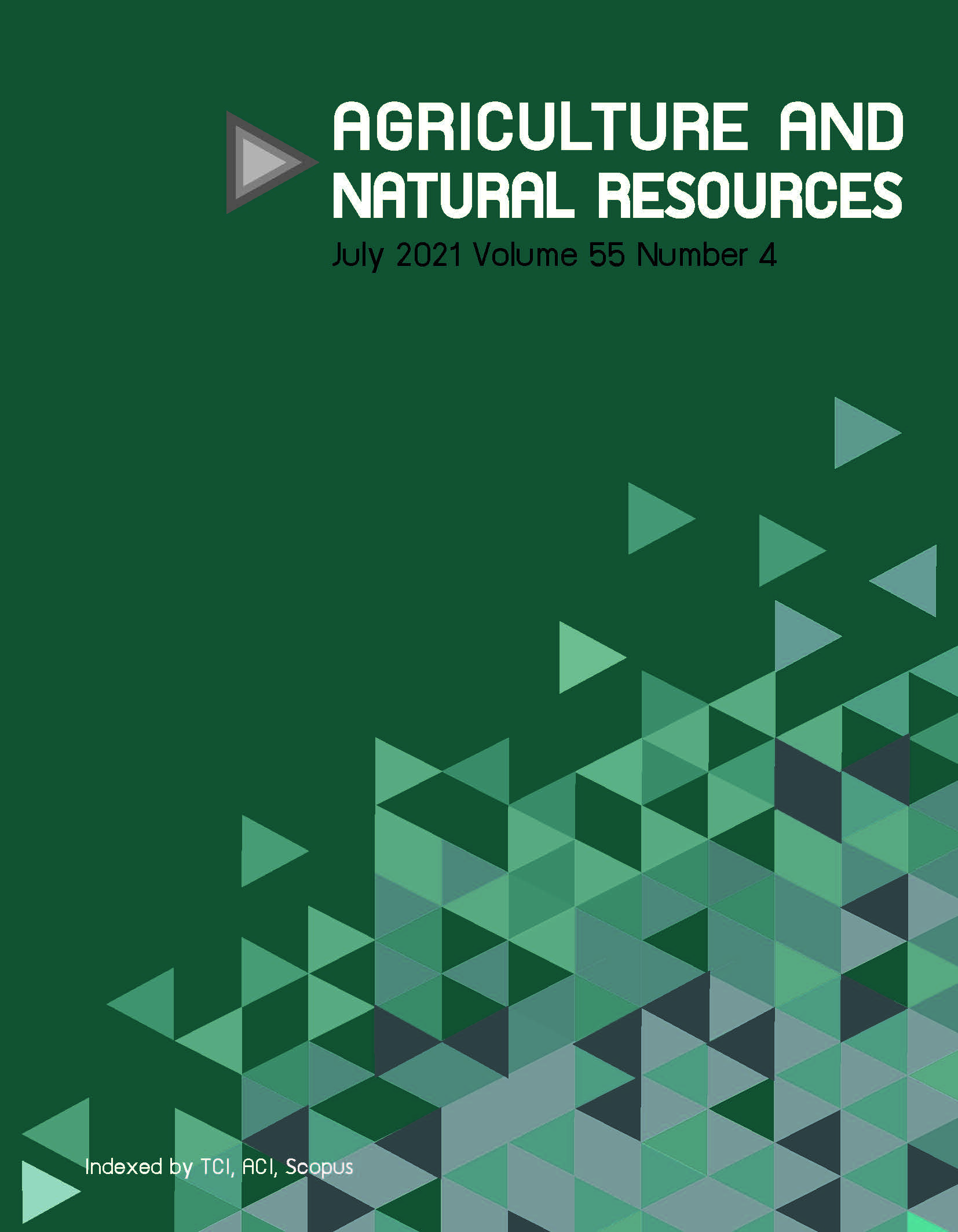Genome scan for quantitative trait loci underlying cucumber mosaic virus resistance in Capsicum annuum ‘CA2106’
Keywords:
Capsicum annuum, Cucumber mosaic virus (CMV), DArTseq, Disease resistance, QTLAbstract
Cucumber mosaic virus (CMV) is a serious disease that causes large economic losses in pepper (Capsicum annuum) crops globally. The genetic resistance of CMV in pepper is complex and the resistance reaction fluctuates across different pepper production areas. C. annuum ‘CA2106’, a variety from the Tropical Vegetable Research Center collection that has been identified as a new resistance source to CMV, shows a specific resistance response to a local CMV strain of Thailand (CMVKPS10). The current study identified the genomic regions which control CMV resistance in ‘CA2106’ via a high-density genetic map constructed using single-nucleotide polymorphism (SNP) markers obtained through the DArTseq technology. A double haploid mapping population was developed from a cross between ‘CA500’ and ‘CA2106’ as susceptible and resistant parents, respectively. The genetic analysis revealed that CMV resistance in ‘CA2106’ is inherited quantitatively. In total, 2,398 SNP markers were mapped across the 12 pepper chromosomes covering a genetic distance of 1,310.18 cM with a mean marker distance of 0.56 cM between adjacent markers. This map was used to identify genetic regions associated with quantitative trait loci (QTLs) for CMV resistance using a restricted multiple-QTL model. Two novel QTLs (Q1A and Q1B.2), conferring resistance to the local CMVKPS10 strain were identified on chromosome 1, explaining 19.1% and 20.1% of the phenotypic variance, respectively. Three QTLs (Q1B.1, Q6 and Q12) were located on chromosomes 1, 6 and 12, respectively. These findings will be helpful for developing closely linked markers to CMV resistance and facilitating the improvement of resistance to CMV in pepper.
Downloads
Published
How to Cite
Issue
Section
License

This work is licensed under a Creative Commons Attribution-NonCommercial-NoDerivatives 4.0 International License.
online 2452-316X print 2468-1458/Copyright © 2022. This is an open access article under the CC BY-NC-ND license (http://creativecommons.org/licenses/by-nc-nd/4.0/),
production and hosting by Kasetsart University of Research and Development Institute on behalf of Kasetsart University.







